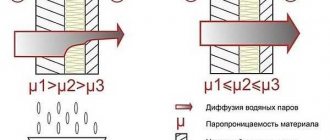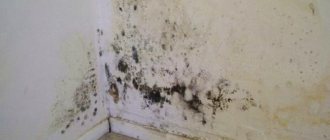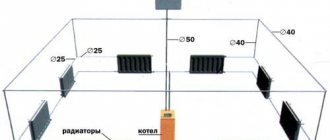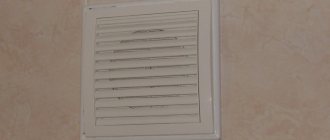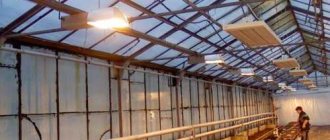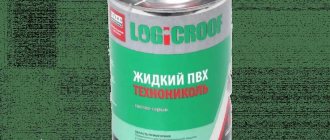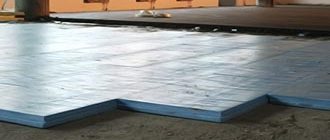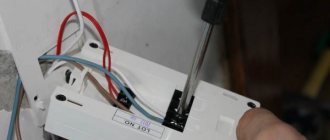Quite often, people face various problems when buying an apartment in different types of buildings. Uneven walls or a lack of electrical outlets are not global problems; there are things that are revealed only during the cold period (during frosts), and they are not so easy to eliminate.
Such visually unnoticeable problems, which should be paid great attention to in apartments of multi-storey buildings, include freezing of walls. Usually people face this problem when cold weather arrives.
Reasons for wall freezing
Determining the cause of wall freezing is not such a simple matter. Walls can freeze in any house: brick and panel type, regardless of their location.
It is clear that the walls begin to freeze due to the appearance of the so-called cold bridge. The question under what conditions it can arise is worth examining in more detail.
Often freezing of walls goes hand in hand with dampness and the formation of fungus
The main reasons for its appearance include:
- depressurization of interpanel seams;
- small wall thickness of a panel house (not suitable for climatic conditions);
- filling the walls with moisture both from the inside and outside (internal flooding with water from neighbors, rainwater entering a damaged seam);
- destruction of the building foundation leads to divergence of panels and cracking of brick walls;
- leaky joint between closely located houses (distance from 0.5 to 2 m).
All of the above reasons can occur equally often. Each of them has distinctive characteristic manifestations.
Violation of the integrity of the seams can cause the formation of a cold bridge
The cause of the outbreak and destruction of the seam between the panels may be:
- using unsuitable material (mastic, sealant) to seal joints (the location of the house and external environmental conditions play a big role);
- the work carried out to insulate the joints was carried out by unqualified specialists, as a result of which voids remained in the sealed joint, where moisture gets in, which changes its state with temperature changes and destroys the wall;
- The external wall insulation produced is not of high quality (if it was produced).
Cold bridges can appear not only in block buildings; a wall in a brick house also successfully freezes where there are no panels or seams between them. In this case, the cause is often an excessive amount of moisture in the apartment or a decrease in room temperature.
Cold corner
The temperature in a room or apartment may decrease for the following reasons:
- poor sealing of window openings (product production or installation work was not carried out according to technology);
- The entrance doors to the premises are not installed tightly and hermetically;
- blows from the ventilation system;
- airiness of the heating system;
- low temperature for heating the room.
Walls saturated with moisture also run the risk of freezing in winter.
Many owners do not even realize that they can make a freezing wall on their own without knowing it.
By carrying out wet cleaning of premises quite often during the cold period, incorrectly storing vegetables on the balcony and frequently watering a large number of indoor plants, each of us can harm ourselves by saturating the wall of the building with excess moisture.
To prevent such processes from happening, it is necessary to frequently ventilate the room and prevent waterlogging in the rooms.
Troubleshooting
If you yourself discover zones of wall freezing, you should immediately take appropriate measures to eliminate this problem.
There are often situations when residents of an apartment building cannot get the heating network to add heating power, and electricity tariffs are constantly rising, and there is no other option but to insulate the premises themselves.
Before you start insulating your apartment, you need to decide which of the options for thermal insulation of the room you will choose: internal or external insulation.
To produce external insulation, it is necessary to invite industrial climbers or use the services of an elbow tower.
Internal insulation of a room, wall or apartment as a whole can be done independently, but this will significantly reduce the volume of the room. So, which of the options for sealing and sealing the wall to choose is up to each owner to decide individually.
Additional insulation
As mentioned above, 2 types of thermal insulation can be used for a frozen wall: external and internal.
Despite the fact that qualified workers are hired to insulate the building from the outside, every owner should know how this process occurs.
When performing external work on façade insulation, polystyrene foam is used as insulation, which is glued to the wall and fixed to dowels in the form of a “fungus”.
After that, the outer surface of the insulating material is reinforced with a plaster mesh (glued to an adhesive composition), onto which a decorative coating is applied in the form of facade paint or decorative plaster.
You can see a clear example of layers of external insulation in the diagram below.
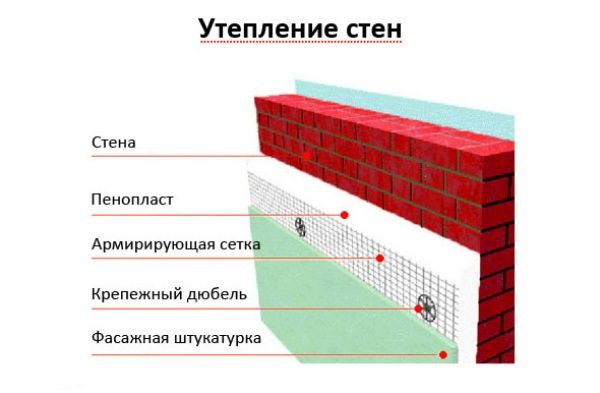
To carry out internal work on wall insulation, an additional frame is created from an aluminum profile or wooden blocks. The width of the frame depends on the thickness of the insulation used.
When creating additional thermal insulation for indoor spaces, mineral stone wool is most often used, since it does not contain harmful impurities and has excellent thermal conductivity.
A layer of vapor barrier coating is attached on top of the installed insulation mats to protect against moisture penetration. For more information about the physics of wall insulation, watch this video:
For internal insulation of premises, it is recommended to use mineral wool of maximum density. Despite the fact that such a product will be quite expensive, you can resort to minor reductions in the room, while creating good thermal insulation and sound protection.

Getting rid of freezing corners of the house
Common causes of cold floors
Installing a vapor barrier on the ceiling in a private house
Each unsuccessful installation of the finishing flooring, which results in a cold floor, has its own reasons and pitfalls. During the coating installation process, factors may seem insignificant, but in the end they will play a big role.
Invisible cracks are the cause of cold floors

Gaps are a very unpleasant defect.
If the flooring is being done in an old private house or apartment, cracks are common, and in order to eliminate all the holes through which warm air escapes from the room, you need to be extremely careful.
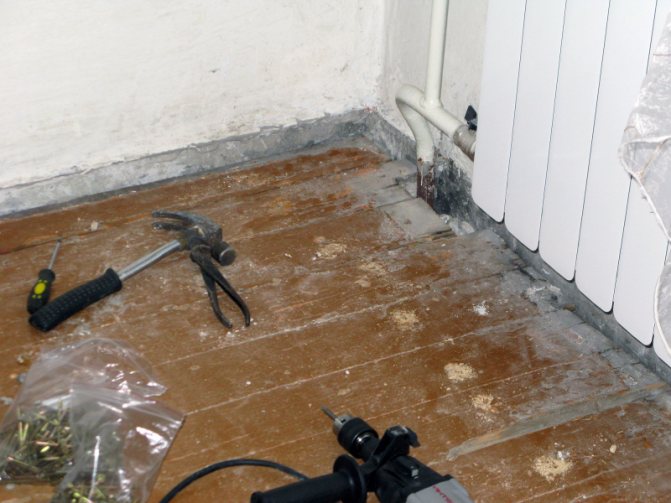
Old coatings need high-quality sealing of cracks
Subfloors in old private houses and apartments were made of wooden boards and cement-concrete screed. The cracks that appear in the screed are visually noticeable; they can be sealed using epoxy glue and special repair compounds.
All sealed cracks in the concrete must be sanded and polished, which will allow all areas to be brought under the general floor level.

It is very important to lay the flooring tightly
The issue of eliminating cracks in an old wooden floor is quite complicated. Not all builders, when installing the finishing flooring, qualitatively prepare the floor in a private house made of wood.
Settled boards dry out at different rates over time and, accordingly, have some unevenness, so all boards should be planed before laying the backing, and after that many of the gaps will “show their true size.”
The gaps between the boards are sealed with sealant or putty, only after this can the flooring be opened with an antiseptic and varnish, this will help make the floor in the apartment airtight.
As a rule, such gaps exist in wooden and frame houses; it is quite difficult to identify them, but this must be done in order to create a high-quality and warm flooring.
Damp floor
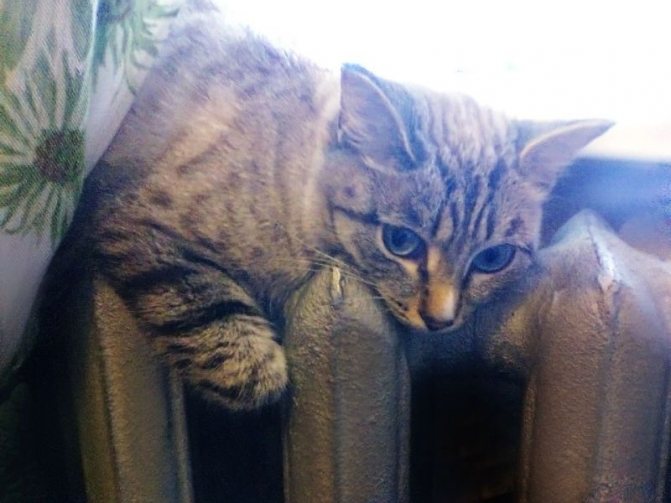
The first and basement floors often have cold floors due to the moisture in the floors
The disadvantage of damp flooring occurs in rooms with a large basement foundation and deep basements. Due to the fact that ventilation outlets are made in the foundations, moisture accumulates there, which can subsequently be transferred to the flooring.
To avoid this, it is necessary to organize waterproofing between the ceiling and the basement. To do this, it is enough to organize a layer of roofing material or membrane film, under which, for complete reliability, lay a layer of polypropylene 2-3 cm thick.
If a defect has already been discovered, then it is necessary to eliminate it and cut out the swollen segments from the screed, organize reinforcement and carry out repairs with a special mixture.
Insufficient insulation
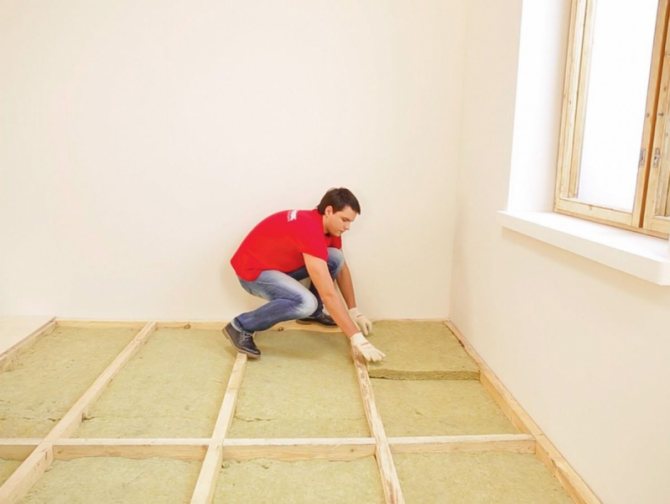
Insulating the floor with special materials often solves the problem of cold
If the owner carries out repairs or construction of the house himself, then he would better put an optional layer of insulation, but will not allow himself and his children to freeze, and will not make the floor icy.
If you hire a construction team that is ready to carry out repairs for a small fee, be prepared that unexpected “surprises” can await you everywhere, and insufficient insulation of the floor covering will also be a small drawback.
If the factor of insufficient insulation has already been discovered, do not despair; you can always find methods to eliminate it. For more information about the reasons for cold floors, watch this video:
For apartments, you can install an additional screed using expanded clay, which will partially solve the problem if the ceiling height allows. To solve the issue of insulation in private homes, there are several options:
- Additional insulation from below. Current method for houses with pile and strip foundations.
- Raising the floor level. Creation of additional overlays on the logs and laying a layer of insulation (mineral wool) with a high density.
- Installation of additional modern heating systems with low power consumption, such as warm baseboards and warm infrared floors.
The options for the insulation used and their characteristics can be seen in the table.
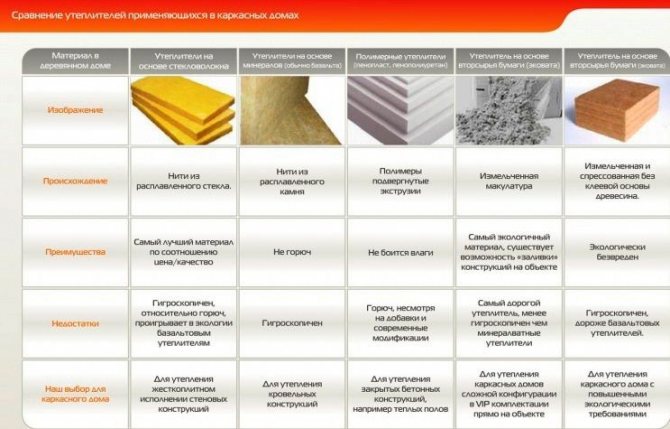
Also, this type of heated floor can be laid under a carpet or carpet, the heating elements will not be damaged. For more information about the problem and its solution, watch this video:
https://youtube.com/watch?v=8UAo7FWoPng
When asking the question: “When the floor in the apartment is cold, what should you do?”, do not worry, there is a way out of any situation. Each owner should choose their own option from the listed reasons for the occurrence of a “cold floor” and try to create thermal insulation using the proposed methods. You should not resort to the services of construction crews; it is better to do the work yourself or ensure that the work is done by trusted people.
Why do corners freeze?
Because of cold bridges, corners are the most vulnerable part of almost any home. These areas of the building structure have increased thermal conductivity. Any vertical or horizontal angle is a geometric bridge of cold. If there is a construction defect - poorly sealed seams, through voids in the concrete, an insufficient layer of mortar between the bricks, lack of the necessary insulation - problems cannot be avoided. Where there are cold bridges, the wall surface temperature in winter can drop below the dew point (to approximately 9 ° C and 50% humidity) while maintaining room temperature inside the room. It is in such places that due to temperature differences, condensation forms, which leads to the formation of mold, and when frozen it turns into ice crystals.
The most logical solution in this case seems to be laying insulation from the inside along the walls. But any such material is essentially a heat insulator, which equally insulates the wall from heat and cold. The use of insulation can even worsen the situation, as it will shift the dew point (the place where cold and warm air touch) to the inner surface of the wall. As a result, cold air from the street will freeze the wall right through, since the heat from the apartment will not be able to penetrate the insulating layer. Wetting and freezing will continue, the insulation will become unusable and will no longer perform its functions. In addition, ice crystals will continue to destroy the wall material, further increasing cold bridges.

When purchasing a country house or an expensive apartment, you can use the services of companies offering thermal imaging. Specialists will help you detect all heat leaks and conclude whether it is possible to correct the builders’ mistakes. This can save owners from many troubles associated with the operation of the house and will save significant money.
Causes
Freezing of walls is not uncommon; this disrupts the microclimate in the house and even the well-being of people. The causes of the problem may be:
- poor seam sealing,
- lack of insulation,
- the presence of through voids inside the masonry,
- lack of solution.
Failure to comply with technical standards or the usual negligence of builders leads to the fact that the wall cannot fully perform its functions.
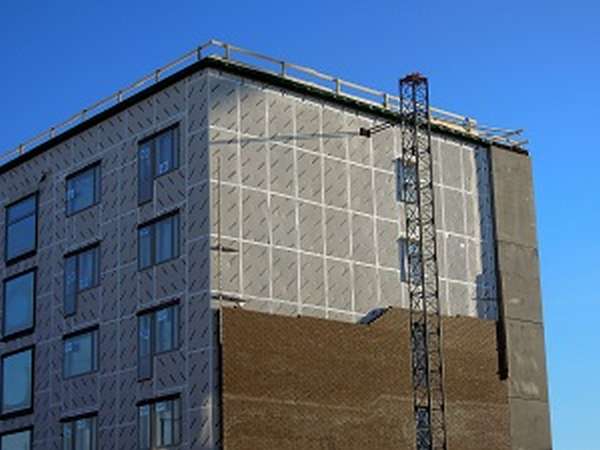
Due to the reasons listed above, “cold bridges” appear, due to which the cold penetrates deep into the wall, which manifests itself in condensation. This process is explained by a shift in the dew point, which ideally should be outside.
Related article: Why plaster concrete walls
When the structure of the brickwork is damaged, the point of contact between warm and cold air shifts, which is the cause of condensation inside the room.
Regular wetting of the surface and warm air provokes the formation of mold . In winter, when the air temperature is significantly reduced, the condensation freezes, turning into ice fungus. This situation requires immediate identification of the causes and their elimination.
Getting rid of freezing corners
The ideal way to solve the problem is to insulate the entire facade from the outside and reliably seal the seams. It is quite possible to repair your own country house, but in an apartment building you will have to turn to the management company for help. But don't despair. And in a separate apartment you can get a good result.
First of all, you need to remove the wallpaper. If there are no visible cracks, then the walls are tapped with a hammer - where there are voids, the sound will be dull. Next, remove the plaster over the detected cavities and thoroughly dry the corner. If there is mold, be sure to treat it with special antifungal agents. Sometimes mold damage is so extensive that the use of acid, blowtorch fire, or milling of the surface is necessary. All cracks and voids are filled with polyurethane foam or liquid foam. This will prevent moisture from entering the room even if there are cracks in the external wall. Finally, they clean off the remaining foam and plaster the corner. It is best to carry out work in the warm season in order to completely get rid of dampness and mold indoors.
If very large voids are found, you should not fill them with mineral wool or tow, as these materials contribute to the accumulation of moisture. It is better to use the same polyurethane foam. It is resistant to moisture, not susceptible to rotting and mold, has high adhesive properties, and does not lose quality when frozen.

Insulation of the entire façade from the outside
Today, manufacturers offer a variety of materials that greatly facilitate the repair process and take it to a whole new level. For example, special heat-insulating (“warm”) plasters are light mixtures in which microscopic polystyrene foam granules or lightweight natural fillers are used instead of sand. This plaster is several times lighter than regular plaster, it applies and sets well. Due to the presence of air pores, warm mixtures have high vapor permeability, regulate condensation and provide a healthy indoor microclimate. A 50 mm layer of warm plaster has a thermal insulating effect equivalent to one and a half to two bricks or a two-centimeter layer of polystyrene foam.
Not long ago, new materials appeared on the market, produced by different manufacturers under different brands, but united under the common name “liquid thermal insulation”. It is indispensable for problem areas such as freezing corners. The insulating suspension, reminiscent of paint, consists of hollow microspheres (ceramic, glass, silicone or polyurethane) that effectively reflect thermal radiation. Microspheres are suspended in a binding composition of synthetic rubber or acrylic polymers, antifungal and anti-corrosion additives and coloring pigments. This composition gives liquid thermal insulation the properties of waterproofness, flexibility, lightness and strength. The thermal conductivity of liquid heat insulators is significantly lower than that of conventional insulation. Several layers of such paint can replace 5 - 10 cm of polyurethane foam or mineral wool.
True, all this is only from the words of manufacturers and sellers; many practical tests have proven the ineffectiveness of such paint as insulation. Its main task is to reduce heat loss on hot water pipes and boilers.

Application of liquid insulation
The problem of corner freezing can be prevented even at the stage of building a house or renovating a new building. In accordance with the laws of physics, the temperature of the inner surface of the corner is always lower than the temperature of the walls that form this corner. Experienced designers say that ideally the corners of walls, both external and internal, should be rounded or beveled. Rounding or chamfering only the inner corner (with wall material or heat-insulating plaster) can reduce the temperature difference between the walls and the corner by 25-30%. The same role is played by pilasters on the outer corners of the building. This is not only a well-known architectural technique, but also a method of additional insulation.
Possible reasons why the walls in the apartment are frozen
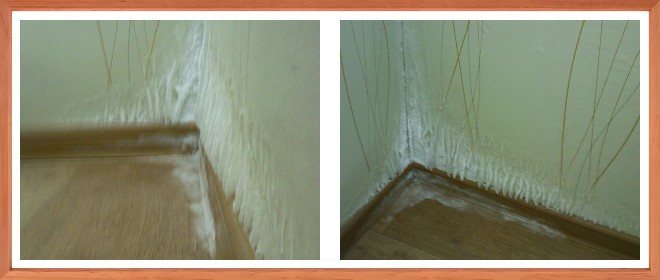
A wall in an apartment freezes most often due to the fact that a large amount of moisture accumulates in it. As a result, its surface becomes damp or wet. The reasons for this problem may be hidden in the following:
- Poor organization of the ventilation system. Because of this, the natural drying of the walls is significantly worsened. Liquid constantly accumulates in them, regardless of the factors why this happens.
- Insufficient heating during the cold heating season of the year. In this case, the premises in the houses do not warm up properly. Thus, the wall in the apartment freezes in a very short period of time.
- Low competence of the builders carrying out the construction of the building. Often, specialists, due to their laziness or lack of experience, poorly seal cracks directly next to window frames or between structural elements.
- Waterproofing that has become unusable. This problem most often occurs on the upper floors of multi-story buildings. If a wall in an apartment freezes, the owner must understand where to turn. Most often, the management company or housing office is responsible for waterproofing a house on the upper floors.
- The appearance of cracks in the house. This reason is considered by experts to be the most difficult to correct. This is due to the fact that in such situations the house needs to undergo major repairs. If work is not carried out to eliminate cracks, they will increase in size every year. This applies to both length and width.
Thus, the walls in the apartment freeze due to a large number of different reasons. That is why, in order to get rid of such a problem, you first need to determine the factors that influenced its occurrence.
What to do
Before choosing a crack repair method, it is advisable to conduct a test to determine the condition of the structure and find out whether the process continues or not.

If the crack does not grow, it is sealed with heat-insulating material and then plastered. When the facade is lined, it is impossible to do without partially relaying the bricks.
Having studied all the factors that cause the crack to expand, choose the following method to solve the problem:
- to fasten the masonry walls, use metal conductors,
- partially relay the wall,
- lengthen the current wall or strengthen the internal ones, which will create additional strength and immobility of the building,
- carry out work to strengthen the foundation. The most difficult method, requiring the help of not only a specialist, but also special equipment.
Related article: How to insulate the walls of a house from the inside under wallpaper
Walls and corners in a brick house freeze due to disruptions in construction or incorrect design. It is best to resort to an external method of eliminating this drawback, but additional internal heat and waterproofing will be cheaper.
The walls in the apartment freeze: what to do in each specific case
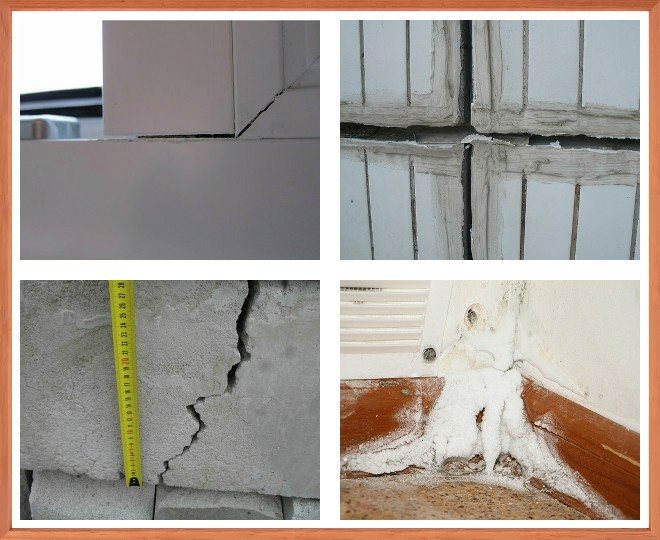
If a wall freezes in your own apartment, a person needs to perform a number of specific actions that directly depend on the cause of the problem. They are as follows:
- If the room has poor ventilation, it is necessary to reconstruct it or install a new system. The longer you wait to solve this problem, the more serious its consequences will be for the apartment and for the house as a whole.
- If a wall in an apartment is frozen due to the heating system, there are three possible options to correct this situation. The owner of the property can submit an application to the housing office that provides him with the relevant services. If you use autonomous heating, you need to either change the heating devices or change the process of using them.
- If there are a large number of cracks in the structure of the building, it is necessary to use special sealants that allow them to be closed. In addition, it is additionally necessary to plaster the outside of the structures with a special material that will prevent precipitation from getting into the cracks of the house material. What to do if the wall in the apartment freezes even after such actions should be decided by a qualified craftsman with relevant experience.
- Sometimes you can notice that a wall in an apartment is frozen not because of problems with heating devices or ventilation, but due to poor waterproofing of the structure. In such a situation, it is enough just to replace the materials that prevent precipitation from penetrating into the room.
- If cracks begin to appear in the house, you first need to assess the possibility of their impact on the integrity of the entire building. In some cases, this problem can be eliminated by a major overhaul. Sometimes it is not advisable to carry out any work. That is why there is no need to eliminate freezing of the room.
Thus, there are quite a lot of ways to deal with a frozen wall in an apartment. In each specific case, the solution to the problem must be approached as carefully and carefully as possible. It is important to understand that sometimes eliminating unfavorable indoor conditions can lead to a worsening of the situation.
What to do with a frozen wall in an apartment
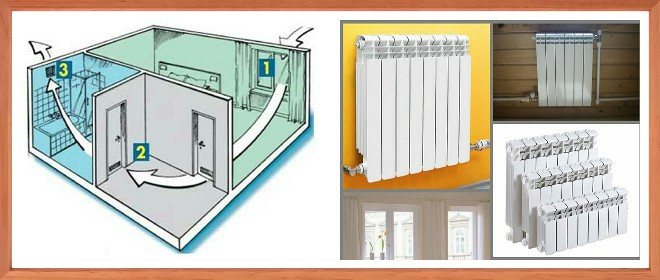
If you have a frozen external wall in your apartment, you need to choose from the most accessible ways to solve this problem. Currently, the following popular methods are distinguished by their effectiveness and reliability, which can be used by any premises owner without any problems:
- External insulation of walls that are in direct contact with the environment. For this purpose, foam plastic has recently been most often used, sheets of which are attached to the wall with special elements. The top of this material is plastered and painted. If a wall in an apartment freezes, it is up to the owner of this property to decide what to do. You can use polystyrene foam only after thoroughly drying the surface.
- Internal wall insulation. In most cases, property owners do not carry out such work, since it requires a complete renovation of the room. If the outer wall of an apartment is frozen, most people prefer to protect it from the outside rather than from the inside. In fact, the second option has a lot of advantages, which is why you shouldn’t immediately discard it without consideration.
- Use of heating devices. Most often, electrical devices are used for this, the heat flow of which is directed towards the part of the wall damaged by high humidity. Such measures are only a temporary solution to the problem, which is aimed at preventing further adverse effects. In addition, the use of heating devices allows you to prepare the wall for work related to its insulation or the installation of proper waterproofing. It is prohibited to perform such actions without first drying the surface.
Thus, there are a large number of options for what to do if the wall in the apartment is frozen. All of them are worth considering before choosing one or another way to solve the problem.
The wall in the apartment is freezing: where can I turn?
If a wall in an apartment is frozen, the owner of the premises usually does not know where to turn. In fact, the answer to this question is quite simple - you need to submit a corresponding application either to the management company or to the HOA.
The corners in a panel house are freezing - what to do?
Panel houses today occupy a significant segment in the housing sector, since they can be built fairly quickly and are an economical and durable solution. However, living in such a house has its own nuances, one of the most serious of which is freezing of walls and corners.
For what reason do the corners of a panel house freeze? This may be caused by:
- poor ventilation, which makes it difficult for warm air to spread; — problems with insulation, allowing moisture to penetrate into the insulation layer and freeze there, increasing micro-tears; — insufficiently intense heating; — construction defects (insufficiently sealed seams, poor quality of concrete slabs, etc.).
First of all, residents of corner apartments suffer from this problem, since cold and dampness spread throughout the house from a freezing or drafty corner. Therefore, the problem of freezing corners should be combated as soon as possible. What can be done for this?
First of all, it is necessary to establish the cause of freezing of panel corners. This requires an inspection of the wall in the problem area, a detailed examination of the joints and a search for possible holes. You will also need to inspect the heating system and roof, which can affect the temperature in the room and, accordingly, contribute to freezing. As a rule, measures to correct the situation include replacing or strengthening the sealant layer, improving the insulation, drying the wall, etc.
If we are talking about a high-rise residential building, then it can be difficult to independently determine and eliminate the cause of freezing of panel corners. But you can always use the services of industrial climbers who can:
— find the reason for freezing of corners and joints of panel houses; — offer solutions that are optimal in terms of cost, speed and efficiency, which will help avoid problems in the future; — carry out all work to prevent freezing of corners in a panel house. This is a budget-friendly solution accessible to everyone, which, in turn, makes life in your home much more comfortable and its maintenance more economical.
Remember: the longer the work on strengthening and sealing the interpanel seams is delayed, the more severe the consequences will be. Freezing will lead to dampness, dampness will lead to the spread of fungus and mold, which, in turn, will have consequences for health.
gor-m.ru
Application for freezing of walls in an apartment
It is necessary to draw up a statement about freezing of walls in an apartment in the correct way. Otherwise, the complaint may not be considered. First of all, the text of the document should indicate the name of the organization to which it is being submitted. Mandatory elements of the application also include the applicant’s full name, address of residence and contact for feedback.
An application for freezing of walls in an apartment must contain the following attributes:
- The essence of the appeal. It can be laid out in any form. It is necessary to explain the reason for writing the application and the specifics of the problem.
- Evidence base. This is usually the certificate of inspection of the apartment by a specialist.
- A complaint about freezing of walls in an apartment without appropriate evidence of a problem may be rejected.
- Date of registration and signature of the applicant.
- Links to the current legislation of the Russian Federation. It is necessary to indicate the norms that this or that organization has violated.
There is also an option for what to do if a wall in the apartment, located in the corridor or stairwell, freezes. In this case, it is advisable to file a collective complaint from several property owners in the building.
How to independently determine freezing of walls in an apartment
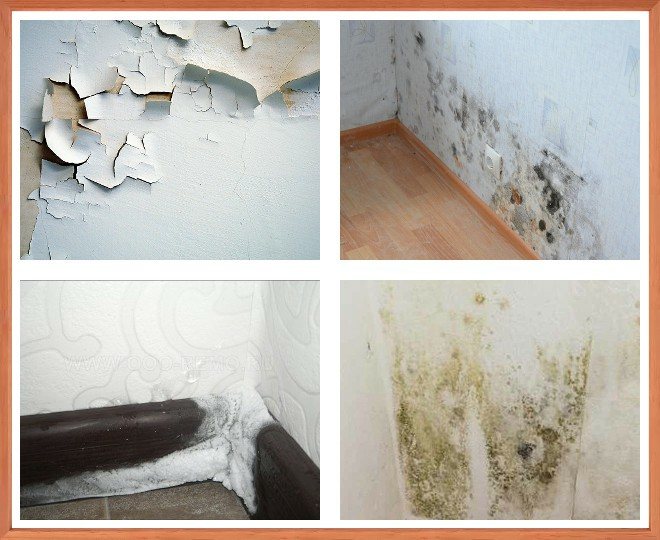
There are several options for determining whether a wall in an apartment is freezing. It must first be carefully inspected, paying attention to changes such as:
- peeling of finishing materials (wallpaper, plaster);
- the appearance of condensation;
- the appearance of frost in the morning and evening;
- severe cooling of the surface;
- abundant growth of fungus and mold.
Methods of how to determine freezing of a wall in an apartment allow anyone to do this. All changes seen must be captured on camera, since in the future, during the proceedings, this may become evidence of the guilt of the organization responsible for ensuring normal living conditions for people.
Before you get rid of freezing of the walls in the apartment yourself, you need to carry out an inspection of the premises by a specialist. In this case, it will be possible to obtain compensation for the money spent in the future.
Drawing up a complaint about freezing of walls in an apartment
Any complaint about freezing of walls in an apartment must be supported by appropriate evidence. It includes:
- certificate of inspection of the premises by a specialist;
- photographs of a wall that was frozen;
- written refusal of the management company to take action to correct the problem, etc.
The more thorough the text of the complaint, the more chances the applicant will have to get help before getting rid of the freezing walls in the apartment.
The consideration of a complaint requires a certain period of time. That is why experts advise handling it immediately after the first signs of freezing appear. In this case, before the onset of severe cold weather, it will be possible to correct the problem with the wall.
Thermal imager and freezing of walls in an apartment
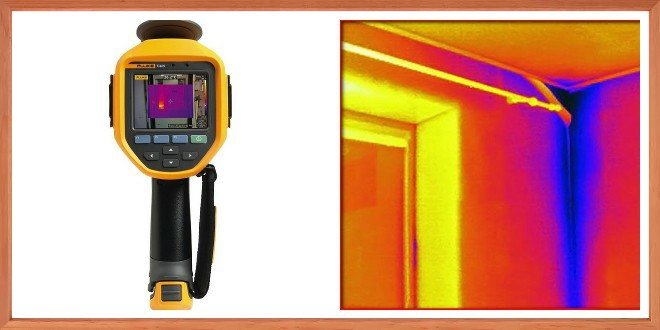
How to make the floor in an apartment warmer. Expert advice
As already mentioned, laying linoleum on a concrete screed can only give a decorative look to your floor. But this will not make it warmer - concrete is a “cold” material, it will cool the coating in winter and summer.
Residents of the first and basement floors complain about the cold coming from below, despite the tongue-and-groove flooring. Wood is a “warm” material, but the cold penetrates through it into the apartment. The reason is the lack of insulating material.
How to correct these construction defects? Let's consider below ways to raise the temperature of a floor covering using insulation and creating an active heating system with electric and liquid coolants.
Classic method
The simplest and most common method of thermal insulation is the use of insulation. Of all, mineral wool (made from non-flammable materials basalt and diabase) and expanded polystyrene are widely used. The latter is well processed, easy to install - you can simply glue it to the concrete screed.
The first stage when insulating in this way is laying lags 50-80 mm high. Plates of insulating material are laid between them. Its thickness depends on the thermal conductivity coefficient - the lower it is, the thinner the thickness of the insulation. The joints between the plates must be taped to prevent cold air from penetrating through these places.
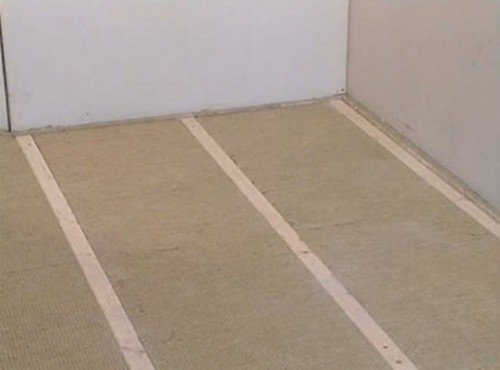
The next step is to create waterproofing. The insulation (especially fibrous) should not be exposed to moisture. Therefore, we cover it with vapor-proof foil or film.
On top of the insulation on the joists we lay a layer of dense material - plywood, gypsum fiber board, chipboard. It is the basis for any decorative coating.
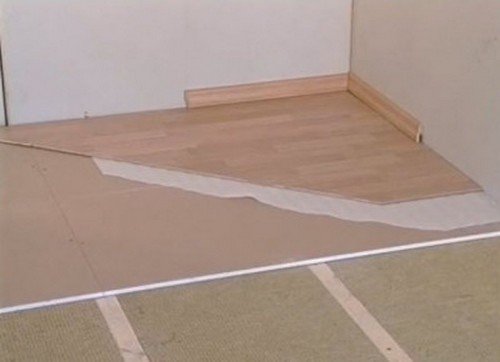
Spraying method
We see from the name that in this case the insulation is not laid out manually, but is sprayed with special equipment. Under high pressure, the EPS material is applied to the base in the form of an aerosol liquid. Hardening occurs in a matter of seconds.
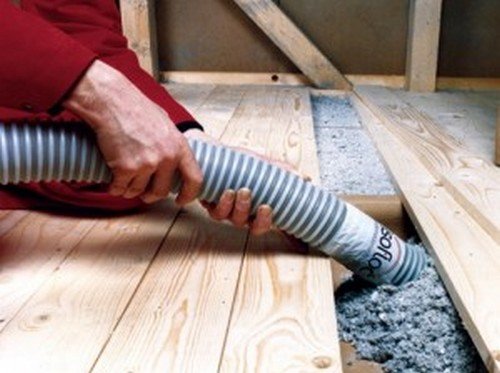
Advantages of this method:
Alternative Methods
In addition to the methods discussed above, for small heat losses, you can use carpet insulation. This material requires constant cleaning and has a short service life.
Izolon is a material sold in rolls. Its installation is very simple. We cut it into sheets of the required size and glue it to the floor with tape. We lay laminate, floorboard, etc. on top. Izolon does not need waterproofing.
There are two types of this system - with electric and water coolants.
Electric heated floor
Let's consider the design of this type of heated floors. The heating cable is laid on a layer of special heat-insulating material and filled with cement-sand mortar. Any floor covering is laid on top - ceramic tiles, linoleum, etc.

More details about the installation process:
We carry out a control check of the system's functionality no less than 30 days later. It is necessary to wait until the cement screed has completely hardened, otherwise voids and cracks may form in it.
There is another type of electric heated floor based on heating films. It is available in the form of mats and is easy to install. The floor covering is laid directly on it.
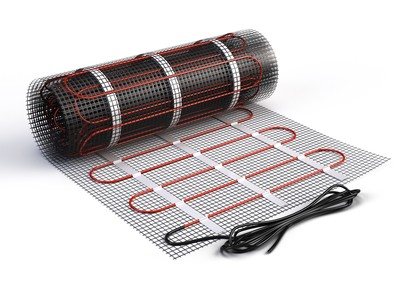
Water heated floor
The most popular type of active floor heating today is a liquid coolant system. In the apartment, such a system is connected to central heating.
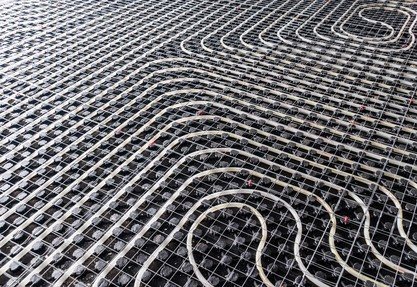
As with electric coolant, here it is necessary to create a “thermal cake” consisting of the following layers:
To connect the created system to central heating, a collector cabinet and a heating point are needed, which allows you to regulate the speed of hot water. (read: Warm water floor in an apartment. What is possible, what is not). During the cold period, the water temperature in the heating reaches 80-90°C; for heated floors, 30-35°C is sufficient. The heat pump built into the heating station allows you to increase the speed of water flow, reducing its initial temperature.
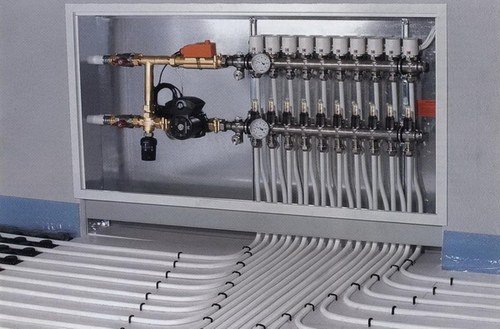
Let's sum it up
We found out that there are two main types of floor insulation - using physical insulation and active “warm floor” systems.
The first method is easier for self-installation and requires less financial costs. Active systems are more complex and expensive, but they allow heating of the floor covering.
A system with a water coolant begins to work only after turning on the central heating; an electric coolant allows you to turn on the system at any time.


